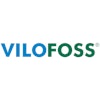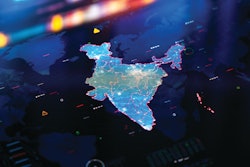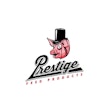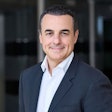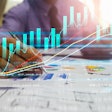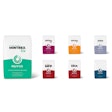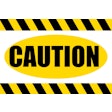
2023 was a transition year for ForFarmers, according to CEO Pieter Wolleswinkel.
Wolleswinkel became CEO of the third largest feed producer in Europe after Theo Spierings resigned from the position in April 2023 due to health reasons.
In November 2023, ForFarmers reported its gross profit was up 4.3% in the third quarter of 2023, while volumes were down 6.2%, yet stabilizing quarter on quarter. The European Feed Manufacturers’ Federation (FEFAC) said in December 2023 that European feed production for the year would be down approximately 2% from 2022.
During the past year, ForFarmers acquired Polish feed company Piast Pasze Sp. z.o.o., sold its Belgian compound feed activities to Arvesta, and abandoned a proposed joint venture with 2Agriculture after encountering pushback from the U.K. Competition Authority.
 Pieter WolleswinkelCourtesy ForFarmers
Pieter WolleswinkelCourtesy ForFarmers
“We restructured ourselves from a central-led company into a more local-oriented company with strong local management teams,” Wolleswinkel said. “We’re focusing on our costs in this period of hyperinflation, and we are accelerating our sustainability journey, especially working also with (supply) chain partners to make progress within our European ambition.”
Sustainability central to ForFarmers’ vision
Now, the company has reworked its vision and mission statement, and sustainability is central to its goals.
“Lowering carbon footprint, enhancing circularity and protecting biodiversity are the crucial pillars of our sustainability journey,” Wolleswinkel said. “We spend a lot of time talking with our suppliers to see how we can improve things. … We also have interactions with retailers, we also talk with the processors, dairy processors, slaughterhouses, to make sure we set a dot on the horizon that is feasible – feasible for the farmers, feasible for the chain, and at the end of the day, also feasible for the consumer. So, based on that, sustainability is very high on our agenda.”
In discussions with senior leaders and other employees at the company, as well as farmers, he said it became clear that ForFarmers can play a role in the need for affordable and sustainable food in the future.
“We truly believe that livestock farming and farmers play a crucial role in that,” he said. “So that is what our focus will be, focusing very much on today, making sure farmers have good returns, but also ensure a long-term robust income for the farmers. And we believe that the sustainability journey is a great opportunity for us in that.”
There are many aspects of feed and food production that can make it more sustainable, such as raw material sourcing and use, factory and logistics efficiency, and feed conversion ratio. In Wolleswinkel’s opinion, the most important thing feed producers can do to improve their sustainability is to focus on carbon footprint.
“At the end of the day, many things come together in this figure, and it’s also the hardest figure to work consistently on,” he said. “We look at our own supply chain, but especially how we can lower the carbon footprint” of the raw materials used.
For example, he said, circularity and circular food systems are key to lowering carbon footprint. In circular food systems, “byproducts are re-used as fertilizer or animal feed, and farm animals are mainly kept to convert human inedible byproducts and grass resources into valuable animal sourced foods,” as defined by Cornell University’s College of Agriculture and Life Sciences.
“For us, it’s great to have an essential role in circular food systems,” Wolleswinkel said. “More and more co-products from the food industry are used within animal feed. Sometimes we see that new raw materials come in our direction, and that is an opportunity.”
He pointed to the re-introduction of processed animal proteins (PAPs) in EU monogastric diets in 2021.
“An example is that, as of two years ago, we can use processed animal proteins from the poultry industry in pig feed and from the pig industry in poultry feed. And by using that, we are able to improve the carbon footprint of our feed and that, at the end of the day, helps the chain,” he said.
Technology can help ForFarmers meet its sustainability goals too, he added.
“We spend much more time with regards to technology to see how can we move forward,” he said. “How can we lower our carbon footprint? How can we replace conventional protein sources? That is very high on our list. So, from a technology point of view, … we’re looking both at today, but clearly also at tomorrow.”
The data collected from the 26,000 farmers the company serves can inform them on how to make improvements.
“We have so many data coming to us that will help us compare farmers one to another,” Wolleswinkel said. “And that helps a lot to ensure that our feeding programs help the farmers move forward.”
Numerous challenges facing European producers
Since the beginning of Russia’s invasion of Ukraine, raw materials prices have been volatile.
“Geopolitics are still affecting raw material prices as we speak,” Wolleswinkel said.
Add to that high inflation, which is affecting consumer behavior, and the feed and livestock industries have their share of challenges.
“As a feed company, we need to take a crucial responsibility in this to really make sure we have the economics right of the feed we supply to our farmers,” he said.
Animal disease, including avian influenza and African swine fever, contributed to the decline in feed production in Europe in 2023, and ForFarmers has not been immune to this.
“Obviously, there’s a direct effect, which means that if an animal disease comes by like avian influenza, the animals are culled, the barn is empty, and there’s no (feed) supply anymore,” Wolleswinkel said. “If we look at, for example, African swine fever, we’ve mainly seen an economic effect for our customers.”
For example, in Germany and Belgium, he said, there were export limitations for a time that affected pig prices.
Also, in Europe, changing animal welfare regulations present a challenge as well as an opportunity.
“If we talk about animal welfare, we often do what regulation or market parties ask from us,” he said. “If I can give an example, in the Netherlands, the broiler chickens are moving more to a free-range system, meaning less chicks per square meter. We need to adjust our feeding programs on that. They have different nutritional demands. So, for us, it’s a good way to differentiate.”
To learn more about ForFarmers and its vision, mission and strategy, visit www.forfarmersgroup.eu.

